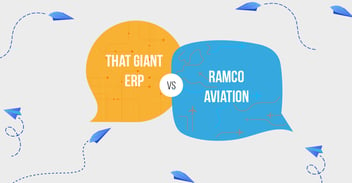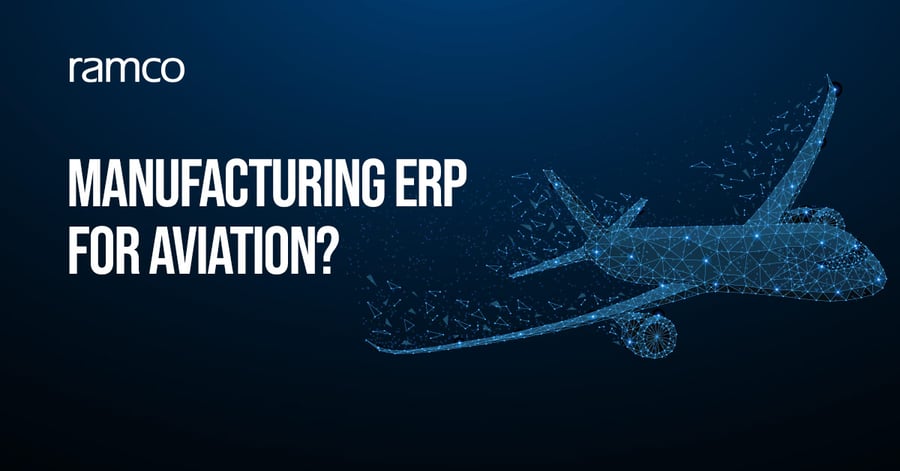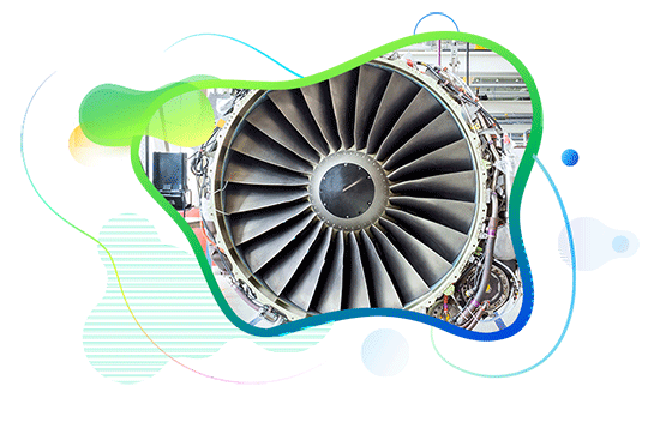
Aviation ERP: Are you forcing Manufacturing ERP to work for Aviation?
Published :

Enterprise Resource Planning (ERP) systems have played a pivotal role in the industrialization, especially in the manufacturing sector, in integrating various departments, automating manual tasks, and bringing efficiencies to operations. Over time, many organizations in non-manufacturing industries too have adopted ERP Solutions as the core system on which operations run, albeit with customizations. And Aviation is no different.
Aviation, Aerospace, and Defense industries are highly specialized industries where safety is of paramount importance and stringent quality control mechanisms are involved in the entire value chain right from aircraft/engine/component manufacturers, aftermarket, and MROs, to operators and supply chain providers.
While traditional ERPs have worked well in taking care of the manufacturing side, they, however, fell short of expectations when it came to the aftermarket/MRO side of aviation in addressing aviation-specific operations.
The matter of fact is aviation organizations like MROs, CAMO, aircraft maintenance operation, supply chain entities have unique operations that require specialized aviation software covering the whole gamut of functions such as Configuration Management, Engineering, Maintenance, Supply Chain, Safety Compliance, MRO & Part Sales, flight operations, employee records, and finance & accounting. And it requires an aviation-specific ERP system to address these specific functions seamlessly.
ERP stands for Enterprise Resource Planning in the aviation industry. ERP systems organize your internal processes for various aspects of your business, such as inventory management, supply chain, sales, accounting, and more. ERP systems are essentially a "system of record" for your company's data.
With competition increasing at a much faster rate, it is critical for commercial air carriers to streamline the process in an efficient manner to reduce operational costs. Reduced operational costs will help to reduce airfare, which will benefit the customer. As the aviation sector expands at an exponential rate, ERP solutions assist companies in integrating manufacturing management, human capital management, discrete production, electronic data interchange, total quality management, and the entire supply chain. As a result, implementing dedicated cloud ERP modules to manage the entire process provides management with effective control over industrial and financial activities.
Unlike a manufacturing ERP system, that requires to be customized heavily to suit the requirements of aviation functions, a native Aviation ERP solution provides the flexibility, scalability and agility that are needed to run Aviation functions from a single solution. Ramco's solution covers all the key functions such as CAMO, line, hangar, engine, component maintenance, 3rd party MRO, flight operations, manufacturing, finance & accounting in the product.
A one-stop-shop solution reduces the complexity in the IT landscape, brings consistency and accuracy to enterprise data, and acts as a catalyst to the organization’s growth.
Mobile applications help in increasing utilization rates of hangars and shops and productivity of teams. In fact, at Ramco, we have developed mobile apps for different user roles and nearly 80% of MRO functions can be done on a mobile device like line maintenance, mechanic/technician’s tasks, warehouse management, crew management, flight logs, approvals, customer order tracking, etc. and there are also tools to enable remote collaboration among aircraft technicians.
Traditional ERP solution's mobile apps lack comprehensiveness and require a lot of configurations making it a cumbersome task. Aviation ERP solutions have tailor-made applications making them compatible to aviation specific needs.
The level of complexity in managing the supply chain of Aviation varies based on the type of ownership- owned inventory, pooled inventory, loans and exchanges; and the type of aircraft – fixed-wing or rotary.
The aviation ERP solution is built to provide inventory visibility of parts across the organization, globally, with information on the condition of parts (whether it is new, serviceable, overhauled, or unserviceable) and movement of parts. Automated quote to cash management, procure to pay, handling aviation-specific PBH scenarios and integration with suppliers through spec 2000 EDI interface for seamless and digitized supply chain transactions are some of the inbuilt benefits that Aviation ERP provides.
There is a common consensus in the industry that digitization can be leveraged as a strategic tool to achieve exponential growth. Digitization is not just limited to going paperless, which is of course a key aspect of the journey, but it also includes ecosystem interface such as OEM interface for seamless data exchange, simplifying the PDF task cards of AMM, EMM, CMM, or custom task cards with the skill attributes, Text Controls, Numeric controls for digitized work execution, and the ability to transform the PDF work package into digitized task card/content and many other aspects which collectively help in reducing TAT and high revenue realization.
When looking at the broad spectrum of digitization, Aviation ERP solution plays a vital role with real-time access to information. This is made possible with the natural advantage Aviation ERP solution has by connecting ecosystems to provide one source of truth.
Also Read: At the heart of digital transformation journey
All this is possible with an effective Aviation ERP system with native capabilities. Ramco Aviation ERP solution has been evolving for over 20+ years and is changing the paradigm of enterprise software with Artificial Intelligence and Machine Learning based solutions, serving all players in the Aviation ecosystem such as OEMs, MROs, Operators, Defense, UAS/Drones, Spaceflight organizations. For more information about our solutions, please do reach us at contact@ramco.com.

All Rights Reserved. © Copyright 2024. Ramco Systems.